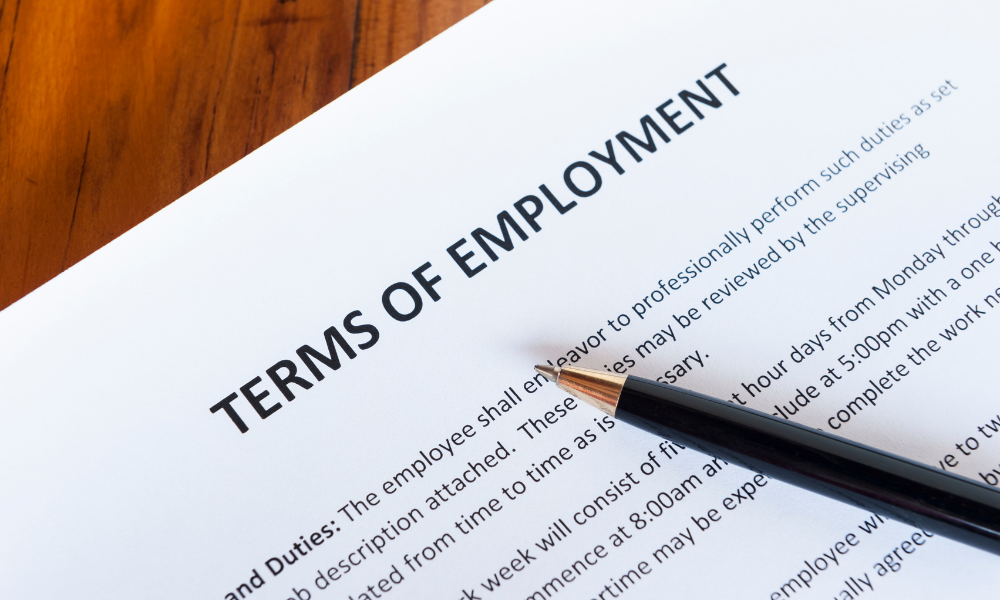
Timing is everything: When exactly does the minimum employment period end?

The Fair Work Commission (FWC) recently dealt with an unfair dismissal application from a worker who claimed he was unfairly dismissed from his role despite receiving two weeks' notice.
The worker argued that he should be eligible for unfair dismissal protections as his employment was set to end after he would have completed six months with the company.
The worker's case hinged on a critical interpretation of when exactly the minimum employment period ends under the Fair Work Act 2009 - whether it's when notice is given or when employment actually terminates.
With his employment scheduled to end on 28 January 2025, but notice provided on 14 January 2025, the timing became the central issue, according to the FWC.
While the worker maintained he should be protected from unfair dismissal since his actual employment would have lasted beyond the six-month threshold, the employer objected on jurisdictional grounds. They argued that the minimum employment period must be calculated based on the date notice was given, not when employment ended.
The worker started his job as grounds and maintenance manager at a company providing services to the Leventine Hill Estate in the Yarra Valley on 16 July 2024. The case documents show that on 14 January 2025, he received a termination letter giving him two weeks' notice, with his employment set to end on 28 January 2025.
The employer, which the decision confirmed was not classified as a small business, objected to the unfair dismissal application. They stated that the worker had not completed the minimum six-month employment period required by the Fair Work Act 2009 to be eligible for unfair dismissal protections.
The FWC needed to determine exactly when the minimum employment period ends - at the time notice is given or when employment actually terminates - as this would decide whether the worker had legal standing to bring an unfair dismissal claim.
The Fair Work Act 2009 sets out specific criteria for when a person is protected from unfair dismissal. Section 382 of the Act states:
"A person is protected from unfair dismissal at a time if, at that time: (a) the person is an employee who has completed a period of employment with his or her employer of at least the minimum employment period..."
For employers that are not small businesses, Section 383 defines the minimum employment period as "6 months ending at the earlier of the following times: (i) the time when the person is given notice of the dismissal; (ii) immediately before the dismissal."
The wording "earlier of the following times" proved crucial in this case, as the worker received notice before completing six months but would have reached the six-month mark before his employment actually ended.
Unlike many unfair dismissal matters where termination and notification happen on the same day, this case featured a two-week gap between when the worker was told about his termination (14 January 2025) and when his employment actually ended (28 January 2025).
The FWC clarified the interpretation of the two-time references in Section 383 of the Fair Work Act 2009:
"In the context of the s.383 the phrase 'immediately before the dismissal' means immediately before the dismissal took effect. Placitum (i) of s.383(a) is concerned with the time when an employee is told that their employment is to be terminated, that is they are dismissed, whereas placitum (ii) concerns itself with another event, namely the time when employment actually ends."
The decision further explained: "The notice required by s.383(a)(i) is information about a forthcoming dismissal, whereas the dismissal itself is an event, not merely a decision occurring when the employment relationship comes to an end."
The precise calculation of the six-month period was the determining factor. According to the Acts Interpretation Act 1901, which applies to the Fair Work Act 2009, a "month" means a calendar month.
The worker began employment on 16 July 2024, meaning his six-month period would end on 16 January 2025. However, he received his termination notice on 14 January 2025 - just two days before reaching the six-month mark.
The FWC's decision was direct: "Self-evidently with [the worker] having commenced employment on 16 July 2024, the '6 months' referred to in s.383 of the FW Act is a period ending on 16 January 2025. It is therefore the case that at the time [the worker] was given notice of his dismissal he had not completed a period of employment of six months."
Based on the timeline analysis, the FWC found the worker was not eligible for unfair dismissal protection because he hadn't completed the minimum employment period when he received his termination notice.
The decision concluded: "In the circumstances I must dismiss [the worker's] application for unfair dismissal." The worker missed the six-month minimum requirement by just two days when measured from the date notice was given.
The ruling confirmed that for unfair dismissal protection eligibility, the critical date is when notice is given, not when employment ends. This interpretation of the Fair Work Act 2009 means employees must have completed their minimum employment period at the time they receive termination notice, regardless of when their employment is scheduled to end.